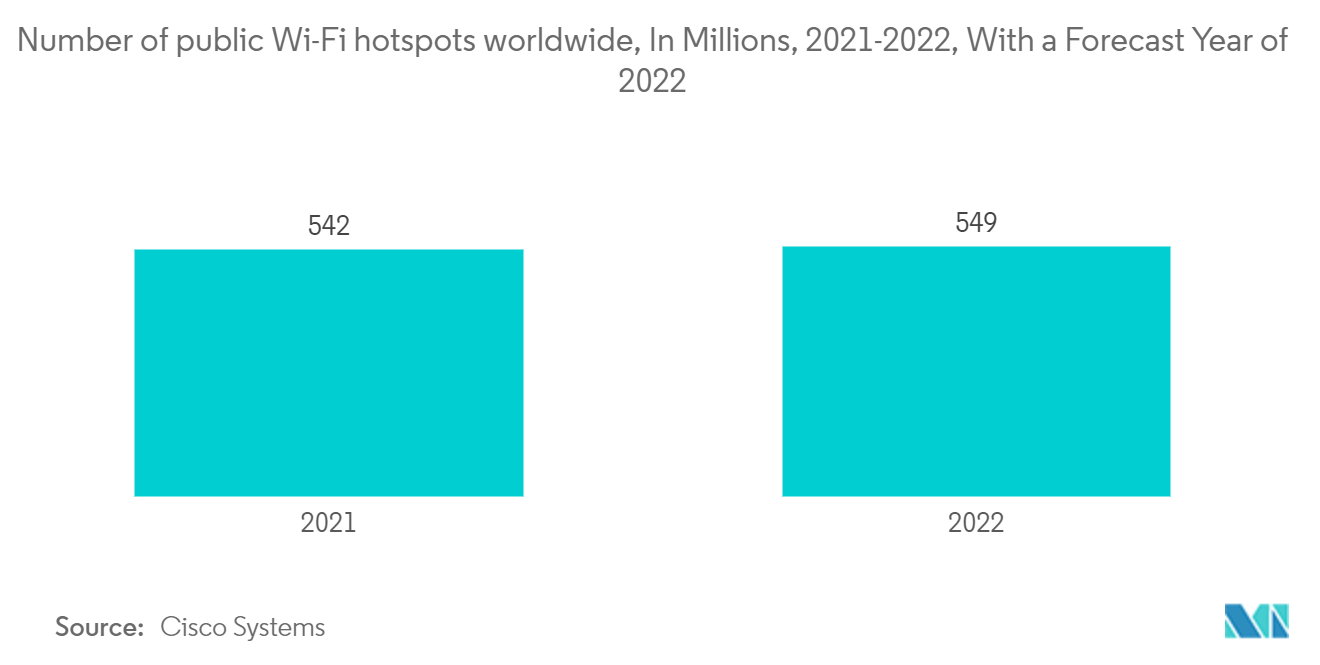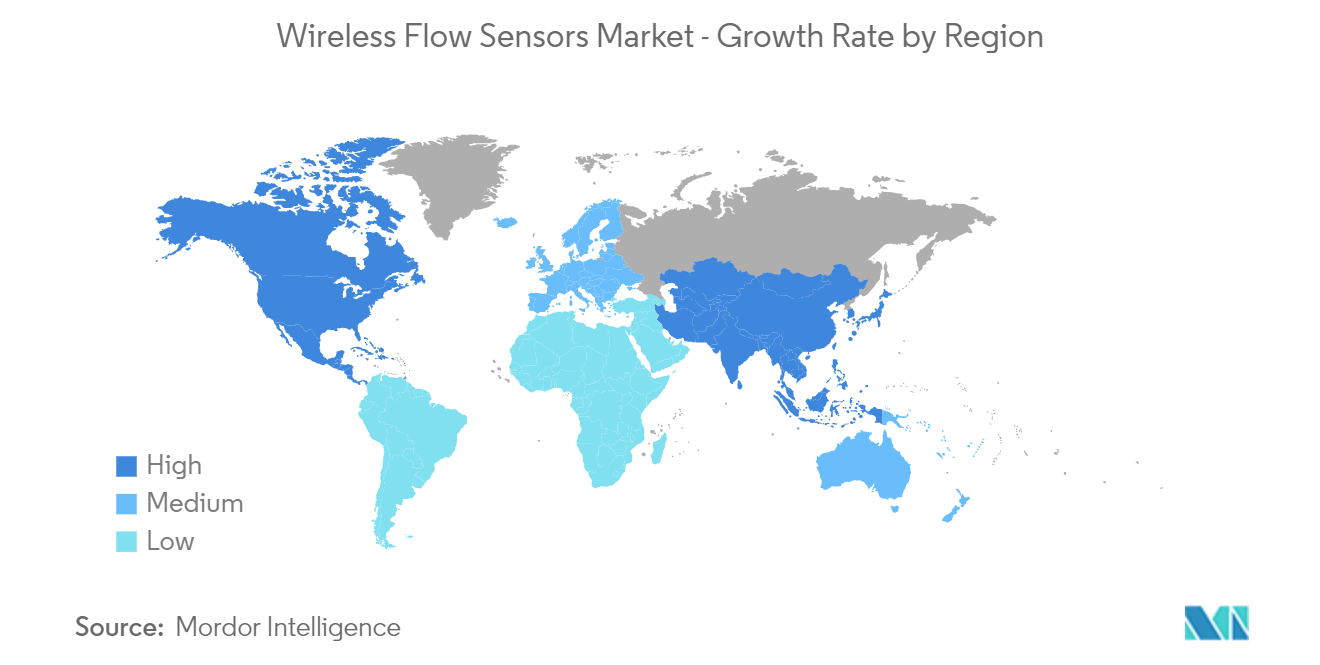Market Trends of Wireless Flow Sensors Industry
This section covers the major market trends shaping the Wireless Flow Sensors Market according to our research experts:
Increasing Adoption of Wireless Technologies to Drive the Market Growth
- Wireless sensors are advantageous over wireline, with a broader range of features and compatibility, faster response, and lower power consumption. Growing investments by leading players and the demand for wireless technologies from end-user industries support the market.
- With many companies moving toward wireless, production costs are declining, enabling broader market consumption. However, a lack of awareness and capital in developing markets and a strong foothold of wireline sensors in traditional markets are restraining the growth of wireless sensors, with many consumers being skeptical about adopting new technologies. Moreover, the increasing adoption of Wi-Fi and WLAN across the globe is driving the wireless sensor market.
- Flow sensors can now shortcut the once-complex procedure of getting flow and status information to SCADA (Supervisory Control and Data Acquisition), CMMS (Computerized Maintenance Management System), ERP (Enterprise Resource Planning), and other enterprise-level networks. With these communication capabilities, the software can easily access the data it needs directly from the device.
- Mobile technology is also working its way into flow sensors. Flowmeters already have wireless, Bluetooth, and web server capabilities, which means flowmeters can be accessed, probed, configured, and diagnosed over smartphones, tablets, and handheld devices. Such benefits of wireless flow sensors are mainly fueling the market demand.

North America to Witness Significant Growth
- The United States is North America's largest consumer of wireless flow sensors. Wireless flow sensors occupy a major share in the United States, with significant demand from the water and wastewater industry.
- The market in the United States is driven by technology, with consumers preferring products offering the latest technology with reliable performance. Thus, wireless flow meters are becoming extremely popular among the end-users in this country.
- Huge investments and legislative initiatives on wireless technology in countries such as the United States and Canada have fuelled market growth in the North American region. Moreover, the region's augmentation of WSN (wireless sensor network) is expected to bolster the market demand for these sensors.
- With many large companies being established players in the market, the US remains one of the prominent countries globally. Growing applications of plastic in industrial and consumer markets result in industrial waste. Approximately 80% of the hundreds of millions of tons of plastics used in the US annually end up in landfills. Another 15% was incinerated, and 5% was recycled, according to pumps and systems, in September 2022.
- As industrial waste increases worldwide, it also increases global pollution that endangers drinking water and air. Understanding the importance of reducing industrial waste, some manufacturers are turning waste into clean fuels. More specifically, they are turning plastic waste materials into commercially viable byproducts.
- To ensure the accurate conversion of plastics to fuel in the system, the demand for flow meters is significantly increasing in two critical and distinct processes in the waste conversion system: monitoring the flow of coolant during distillation and accurately metering the fuels being dispensed from the facility holding tanks into users' tanks.


